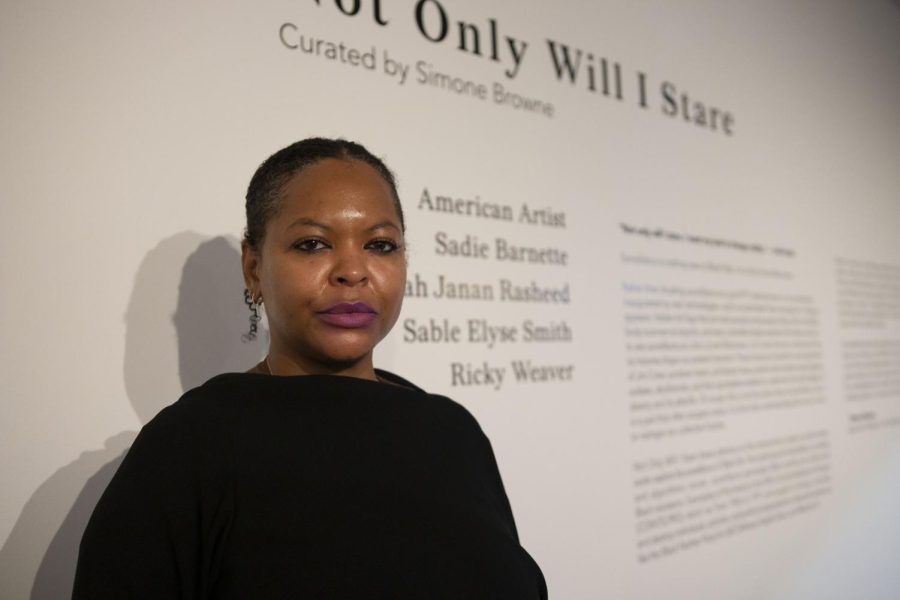Simone Browne showcases conversation between Black studies, surveillance in SXSW featured art program ‘Not Only Will I Stare’
March 23, 2022
Editor’s Note: This article first appeared in the March 11, 2022 SXSW flipbook.
While likely recognized best in a classroom setting, Simone Browne may also be spotted in the Beauford H. Jester Center’s Christian-Green Gallery, sitting cross-legged on a wooden bench soaking in the sights and sound of her self-curated exhibit, “Not Only Will I Stare.” Extrapolating from her academic works, such as her 2015 book “Dark Matters: On the Surveillance of Blackness,” the African and African diaspora studies professor used the space to showcase selected artists and artwork which reflect the intersections and evolving history of surveillance and the Black community.
While many Americans may think of surveillance as harmless security cameras, through this exhibit, Browne uses art to showcase how surveillance can be used to hinder Black protest and perpetuate racist practices. A free, featured art program of South by Southwest 2022, “Not Only Will I Stare” will run until May 21.
Daily Texan: How did this exhibit come to fruition?
Simone Browne: Each of the artists in the exhibition I met around the time my first book came out. When it came out, they either reached out to me, or we were put in conversation together. I learned so much from how they think through and grapple with surveillance through their own creative practice and output. I thought it would be fantastic to have them all in the same space.
DT: How does this space reflect, compare or speak to your book?
SB: What I tried to do with that book is to put Black studies and surveillance studies into conversation, to think about how surveillance is a fact of anti-Blackness, how at least in the U.S. context, North American, Western — quote, unquote — hemisphere, it has histories in the transatlantic slavery and plantation surveillance. These artists extend how we think about prison, carceral state or the FBI. … These artists grapple with the surveillance in its various methodologies and find ways to think about undoing that and what it would mean to live a life beyond the surveillance state.
DT: How do you feel in this space? What emotions do you hope others feel when they walk through?
SB: At the end of last year, writer (and) poet, professor bell hooks passed away. We already had the title of the show taken from her essay, but having the whole quote around the gallery window has been important for me. (The title is) all around the place; it’s in that selfie mirror. Our looking relationships are more about not only looking, but also looking back, about changing perceptions. Once you change perceptions, we can change the ways that surveillance is the operating system of our lives.
DT: How do you think that art can be used as a window to look at history, and how do some of these pieces do that?
SB: The pieces by Sadie Barnette — when we think about the counterintelligence program, COINTELPRO, we imagine that’s something far away, but we still have those — surveillance of Muslim communities, activist, organizers of folks through social media and other sites. The practice of state, those kinds of alphabet agencies’ interventions and their ability to index people’s commitment to freedom, liberation and equity as threats to the state still continue.












